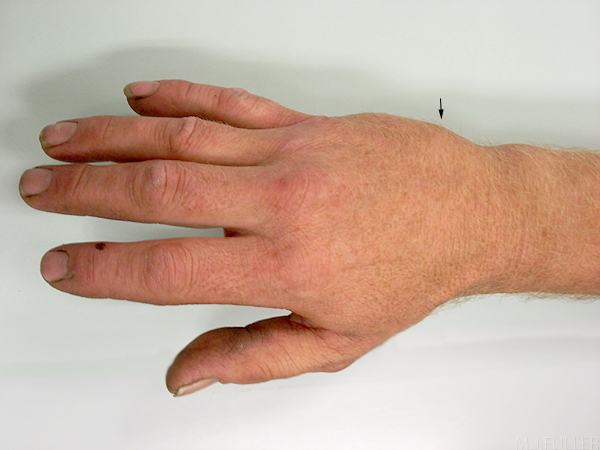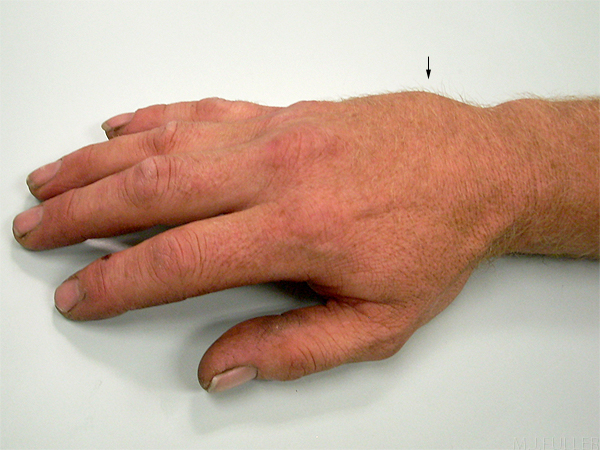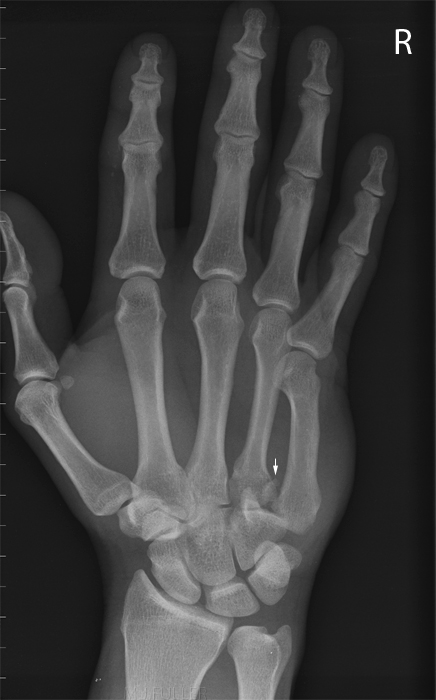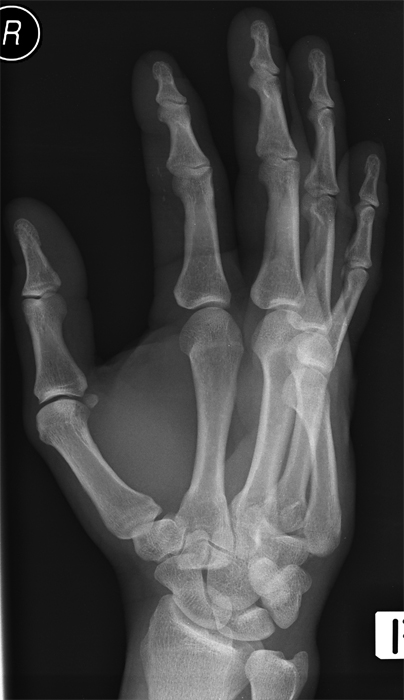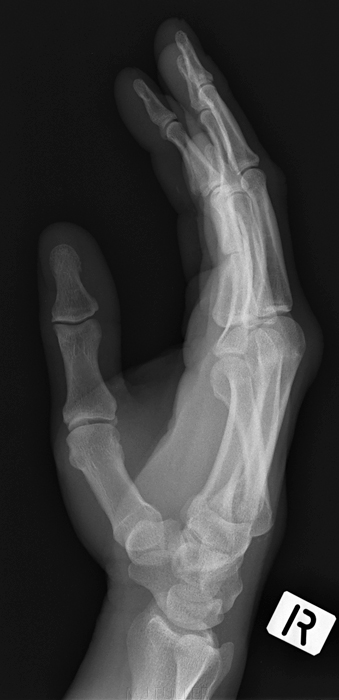Tenneb Fracture
Jump to navigation
Jump to search
Introduction
Reverse Bennett Fracture"Because the fracture-dislocation of the base of the fifth metacarpal is pathologically and radiographically similar to the Bennett fracture of the thumb metacarpal, it is referred to as a "reversed Bennett", "ulnar Bennett", or "Tenneb" (Bennett spelled backwards) fracture". In further analogy with the Bennett Fracture, the large distal fragment of the base of the fifth metacarpal is proximally retracted by the flexor and extensor carpi ulnaris muscles, and open reduction and internal fixation are recommended to reduce and stabilise the fracture fragments. (J. Harris, W. Harris and R. Novelline, The Radiology of Emergency Medicine, 3rd ed, Williams and Wilkins, 1993, p452 - 455).
Case 1
